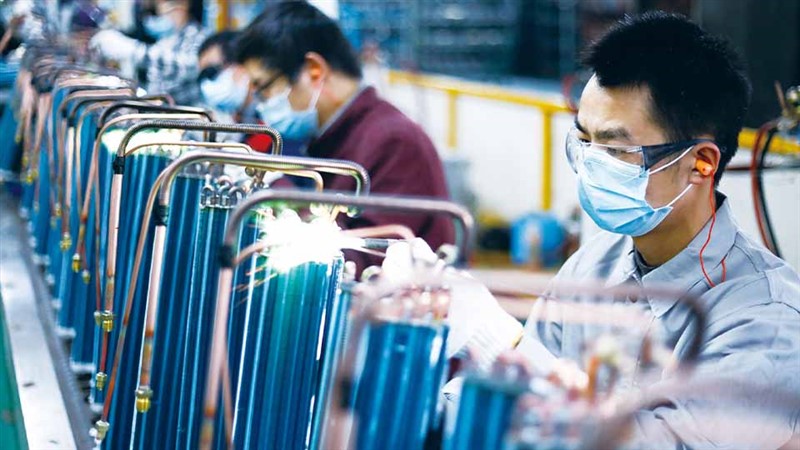Banker's Digest
2024.09
The Third Plenum points to more muddle through but with more mud than ever

China’s long-awaited Third Plenum is finally over. Four days of high-level meetings (from July 15 to 18) among Party leaders ended with a perplexingly vague read-out of the meeting. The press conference on July 19 has not managed to assuage China watchers’ general impression of an uneventful gathering even if 300 reforms have been counted from official media. Reportedly, most of them are already underway. Being the third Plenum after President Xi Jinping guidance, expectations were high, as it was understood that the first one (in spring of 2014) could only set the tone of his mandate, as he had just been appointed. The second Third Plenum under Xi Jinping, in 2018, focused on lifting the term limits in China’s constitution for his reappointment, rather on reforms. This Third Plenum was the first under an all-mighty Xi, unbounded by term limits, but also the first after the Covid pandemic, having brought to light the persistent imbalances of the Chinese economy, especially regarding the very low contribution of private consumption to growth. It is also true that from the first plenum under Xi to this one, the external environment has deteriorated quite dramatically given a much more aggressive US leadership, whether it is Trump or Biden. Against such backdrop, the readout and press conference following the Third Plenum insist on how difficult the external environment has become for China, but also acknowledge three key domestic challenges, namely an ailing real estate sector, poor local government finances, and systemic financial risk. Three measures stand out from the vague readout.Firstly, the push towards more rapid urbanization, through reform of rural versus urban land. Secondly, the centralization of fiscal policy and, thirdly, further focus on innovation and moving up the ladder. On the first, reform of the land system was prominent in this readout with the objective of speeding up urbanization. Accelerating urbanization should create additional needs for infrastructure and continue to move low-productivity workers in the rural areas into the cities, fostering growth. The second, fiscal reform, was mentioned as part of a “national strategic planning system” with aims at centralizing more fiscal responsibility and cutting local government expenditure. The need to improve local government finances is important and urgent, given the huge imbalances between local governments’ revenue and expenditure, especially given the collapse in real estate investment since mid 2021, but the direction given in the Plenum’s readout could be problematic. Further centralization of government expenditure can have implications for a number of key issues, such as the way China conducts industrial policy or spends on research and development, which has long been based on competition among local governments. The third and final focus of the readout was innovation and industrial policy.This came as no surprise as the advance of the “new quality productive forces” was already high on the policy agenda one year before the plenum. But two phrasesstand out in the document: “the new system for mobilizing resources nationwide to make key technological breakthroughs” and “talent”. It is hard to know whether the “new system” is really new, or it is more of the same thing, namely conducting an innovation-centered industrial policy. What seems clear, however, is that China’s leadership is quite happy about its supply-centric growth model, no matter the complaints from the rest of the world, from overcapacity to dumping cheap exports into the global trading system. The reason probably lies in the urgency with which Xi Jinping wants China to reduce its technological dependence on the US and become self-reliant. Furthermore, innovation is expected to improve productivity and, thereby, mitigate the negative impact of aging on growth. Given these three solutions to its three challenges, China clearly is trying to mitigate its structural deceleration through urbanization and further industrial capacity supported by innovation, while improving its public finances and becoming more self-reliant.The hope is that these three measures will create a virtuous cycle by which systemic risk from the real estate, but also local government, is reduced. Waiting for the details on the actual reforms that China’s leadership commits to implementing from this Third Plenum, the first impression is that the above measures will probably not be enough to solve China’s economic woes. Firstly, the Chinese economy needs to go back to its vibrancy, yet both consumer and investor sentiment are unlikely to change on the basis of such measures. In fact, no specific reform has been announced to reduce excess savings and support household consumption. This would require the creation of a well-functioning welfare state which does not seem to be in the Chinese leadership’s plans. Secondly, and related to the first point, there does not seem to be any preoccupation on China’s increasingly large production without domestic demand while protectionist forces are rising against Chinese imports. Lastly, China’s private sector is generally more productive than state-owned enterprises, but has been increasingly hammered by the Chinese government through tighter regulations and other types of crack-downs. The readout does not seem to give any indication of a change in direction; if anything, it has given the opposite, by omitting the adjective “decisive” when speaking about the role of the private sector compared to the 2013 and 2018 gatherings. All in all, the “Third Plenum” which has just concluded has clearly not been a game changer in terms of the reforms announced, especially given the challenges ahead both externally and domestically. It seems as if the Chinese authorities prefer to muddle through while doubling down on their convictions. The problem is that there is by now much more mud to deal with. The author is Chief Economist for Asia Pacific at Natixis and Senior Research Fellow at Bruegel



